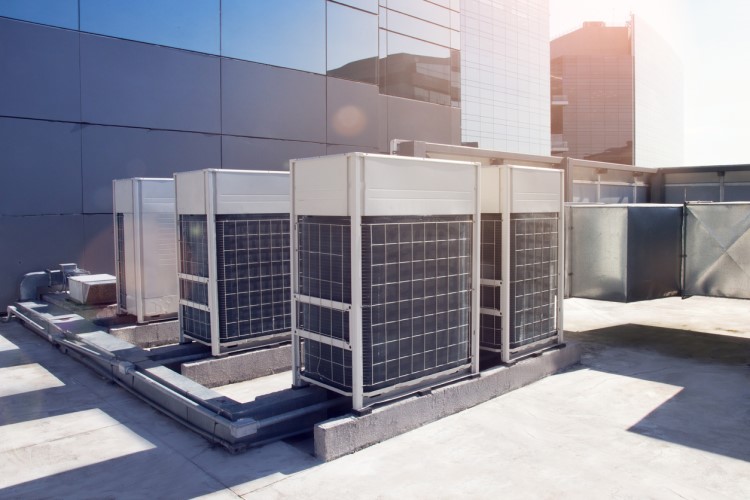Commercial HVAC Design: A Modern Guide
Do you know what is central to every office? Besides to the chairs, tables, copy machines, and printers, there is another essential element—the HVAC system.
No office can be ready for use and occupancy without an HVAC (heating, ventilation, and air conditioning) system. Commercial HVAC design is an industry dictated by compliance systems and engineering. But, there are other factors like efficiency, energy savings, and cost-effectiveness at play.
Want to learn all about modern HVAC for business? This article has got you covered.
Energy Efficiency Is Key
HVAC systems are notorious for consuming a lot of energy. Your heating and cooling system will consume more power than any other part of your office.
Traditional offices years ago didn’t have much of an emphasis on energy efficiency. But today, energy savings and consumption is a critical element of modern HVAC design. One of the main reasons for this is that energy savings equal cost savings. By using energy-efficient solutions, your business will save significant dollars on electricity bills.
Another reason why energy efficiency is valued in the workplace is that the government subsidizes bills for LEED-certified buildings. LEED is a green building rating system used globally. A great LEED score means increased asset value and decreased operational costs. Not to mention, the goodwill and recognition your brand will generate for doing your part will be great.
Modern HVAC design follows a holistic approach to energy savings. Rather than focusing on the HVAC unit alone, considering architectural elements is important. This helps manage energy efficiency.
For example, integrating daylight to reduce heating loads in the winter. Another option is using dimming lighting systems that auto-adjust to daylight systems. Tinted Low-E glass helps produce less heat waste. Thus, there are lots of options out there for the energy-conscious business owner.
HVAC Systems Use Zoning
Modern HVAC design incorporates zoning for more efficiency. If you’re looking for a system for your office, be sure to consider a design that used independent zones. This will be important because modern offices are open concept as opposed to more closed off.
Heating and cooling an open space can be trickier than managing a variety of smaller rooms. Thus, HVAC professionals divide up open offices into smaller zones. Each of the zones has different HVAC requirements to remain comfortable.
For example:
- Perimeter spaces are more susceptible to external weather changes
- Some zones need specific humidity or temperature controls (computer areas or storage rooms)
- Gathering areas which house a lot of people but also remain empty for many hours of the day (like conference rooms) need adjustable controls
- Overhead systems need controls so that experience can be adjusted to individual preferences
- Energy and power consumption can differ by zone, season, and time of the day to maximize savings
Zoned offices can enjoy a well-planned and organized HVAC system. By utilizing zoning, modern offices can make the most of their energy investment.
Track Indoor Air Quality
HVAC systems aren’t just about thermal protection and comfort. They also help control humidity, temperature, and odors. Thus, HVAC systems also manage air quality levels.
With the COVID-19 pandemic, air quality has become a significant factor when HVAC systems are designed. The system needs to be able to remove airborne contaminants. These include contaminants such as carbon dioxide, bacteria, dust, and viruses.
HVAC systems are critical in circulating air. They also flush out old air and toxins for a clean work environment. This is vital in improving the quality of life (and productivity) of your employees.
Another critical function is that the design must allow for indoor air distribution. This can be a complicated factor to get right and will require the expertise of professionals. Hiring the right team to design modern HVAC systems is essential. Experts will ensure everything is done the first time correctly round, saving you time, effort, and money down the line.
Smart Technology
Another factor that distinguishes modern HVAC design from older systems is the use and application of technology. Specifically, sensor technology, which has evolved a great deal over the years.
There are two main kinds of sensors that are integrated into HVAC system design:
- Light sensors: Occupants can adjust the light (dimming, increasing) it, etc. in line with energy use and daylight conditions
- Occupancy sensors: These sensors check how many people are in an area at a time, adjusting the HVAC responses to the needs within the space
Both occupancy and light sensors are essential to HVAC design. They ensure that the office follows energy-saving principles and reduces the cost of electricity each month.
They also modulate experience and allow for personalization rather than a one size fits all approach. Also, the system can be increased or decreased to accommodate loads in the space.
Commercial HVAC Design Is Key to a Comfortable Office
The corporate office has transformed over the last few years. There are many different considerations for HVAC design. These include energy efficiency and maintaining an open concept space.
A well-formulated commercial HVAC design will ensure that your space is comfortable and productive all year round. As such, heating and air systems are critical to the success of your business.
Looking for quality, reliable HVAC services? Our team of professionals can develop the ideal commercial system for your business. We take care of everything—from installation and maintenance to replacements and energy management.
Click here to request a quote for your next project today!






